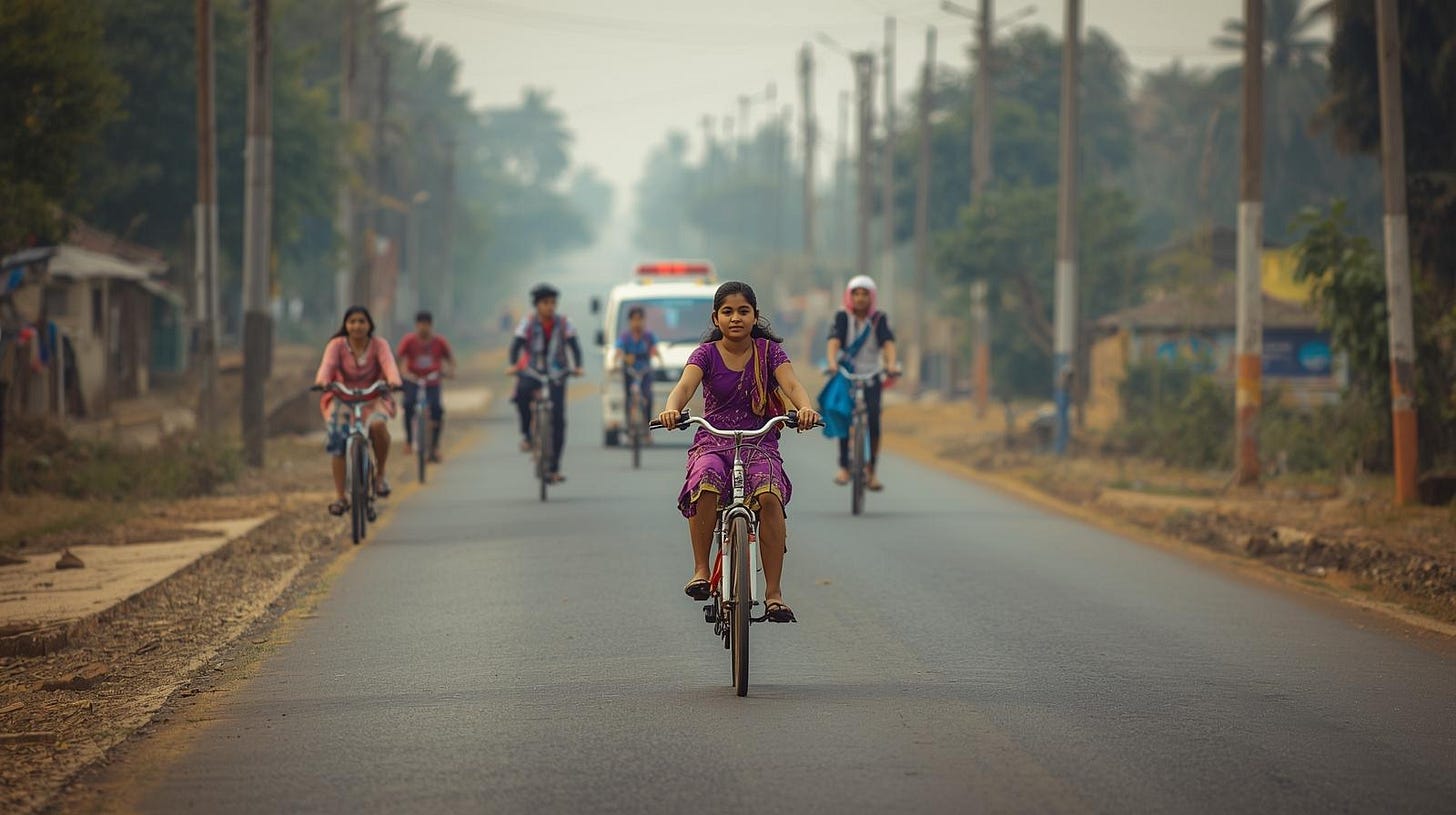The Security Dividend of Rural Roads
Rural roads do more than link people to markets; they can also bolster public safety where formal law enforcement is weak.
View as PDF
Shreya Biswas, BITS Pilani (Hyderabad Campus)
Ritika Jain, Centre for Development Studies
SDG 9: Industry, Innovation, and Infrastructure | SDG 16: Peace, Justice, and Strong Institutions
Institutions: Ministry of Rural Development | Ministry of Home Affairs | Ministry of Road Transport and Highways
Rural roads are credited with improving access to markets, services, and employment. But does connecting a village with a road make it safer? Or, does it create new risks? The answer is both intuitive and contested. Economic models predict that greater access to employment opportunities will raise the cost of engaging in crime. Yet greater mobility can also be exploited by those intent on harm.
In India, this is not an abstract debate. Large-scale investments in road infrastructure under the Pradhan Mantri Gram Sadak Yojana (PMGSY) have expanded connectivity, even as many rural areas still face low crime reporting, limited policing, and overburdened courts. In such settings, does a new road curb crime or enable it?
The findings can have significant implications for how governments view infrastructure, not just as a driver of economic development, but also as a tool for public safety.
Evidence from the Ground Up
To understand how rural roads affect crime, this analysis draws on two rounds of the India Human Development Survey (2004–05 and 2011–12), covering more than 27,000 rural households. Unlike official crime data, which can be skewed by underreporting or bureaucratic filtering, these surveys asked families directly about their experience with criminal activities such as theft, burglary, and assault. These questions were framed neutrally and limited to incidents within the household’s own experience. With little incentive to misreport, the responses provide a more reliable indicator of local security conditions. Crucially, the surveys also asked whether a village had been connected by a pucca road.
Simply comparing connected and unconnected villages would, however, be misleading. Road construction in India is not random: governments may prioritise villages with better governance, higher incomes, or lower crime. Failing to account for these factors risks confusing administrative priorities with the actual causal effect of roads on crime.
To address this, the analysis uses an “instrument" variable; a factor that correlates with the availability of a pucca road in the village but not directly with its other factors. Then, this instrument will influence village-level crime only through an intermediating role of village-level roads.
A variable drawn from within the village is unlikely to serve as a suitable instrument, as it would almost certainly be correlated with local characteristics, such as governance quality, household income, or community cohesion, all of which also affect crime. Instead, the total length of roads constructed under the PMGSY at the district level over the preceding five years offers a stronger candidate. As a district-level measure, it reflects wider construction trends rather than the specific conditions of any single village, making it less likely to be directly linked to that village’s governance or economic circumstances.
The result, using the instrumental variable approach, is clear: villages with pucca roads experienced lower crime levels. This conclusion holds up even upon using official crime data from the National Crime Records Bureau.
Where Roads Reduce Crime, And Why?
Households in villages connected to roads were at least seven percentage points less likely to report experiencing a crime. The largest effects were observed for theft and physical assault, with a modest but still significant drop in burglary.
However, these gains were not evenly distributed. The impact was strongest in states with limited police capacity: those with low police-to-population ratios or weak chargesheet rates (the share of investigated cases in which police file charges). Here, infrastructure appears to serve as a partial stand-in for state capacity, helping to fill enforcement gaps through better economic integration.
The benefits were also sharper in areas with active rural employment schemes, such as the Mahatma Gandhi National Rural Employment Guarantee Scheme (MGNREGS). Roads in these regions seemed to unlock the potential of public programmes by improving access to work. A similar dynamic was seen in densely populated areas, where more individuals could take advantage of new links to labour markets.
What explains these patterns? The answer lies in economic incentives. Connected villages showed higher employment, especially among poorer and less formally educated households. Public transport availability increased, and commuting to work became more common. As legitimate income opportunities grow, the appeal for crime diminishes - altering the risk and reward trade-offs.
How Infrastructure Multiplies Public Value
The broader take is that well-placed infrastructure can support public safety. In resource-constrained settings, rural roads can act as indirect deterrent, offering economic inclusion in lieu of constant enforcement.
The sequence of interventions matters. Where employment schemes or institutional gaps already exist, a strategically located road can yield returns far greater than what might appear on a balance sheet.
Yet roads alone are not enough. Without complementary institutional investments, such as public bus services, rural policing, electrification, and local governance, the benefits of connectivity can fade. Infrastructure is most effective when it forms a part of a broader state presence.
The State, Rewired Through Roads
These findings have wider implications for how governments think about public policy.
First, where policing and formal institutions are weak, roads can enhance social order by connecting individuals into economic systems. Governance does not always require constant enforcement; some of it can come through access.
Second, roads have the greatest impact when paired with employment guarantees, population density, or access to local markets. This underscores the importance of coordinating infrastructure with programmes that deepen its impact.
Third, as legal work becomes more attainable, illegal activity becomes less rational. This principle could inform other aspects of policy making, from urban planning to youth employment strategy.
At a time when public institutions are under pressure to deliver more with less, roads may be delivering far more than mere connectivity. In some sense, a rural road is not just a public work, it is also a tool for public safety.
View as PDF
Authors:

The discussion in this article is based on authors’ research published in Journal of Quantitative Economics (Issue 47). Views are personal.


